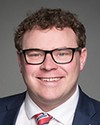The issue of consent is raised in the Haida decision by the Supreme Court of Canada. It's also raised in the Tsilhqot'in decision. The chair of the Tsilhqot'in Nation or the national government is Chief Joe. It's about the ability to make decisions.
The specific wording of free, prior, and informed consent is in the UN Declaration on the Rights of Indigenous Peoples, but it doesn't have its origin there. It has its origin in other international conventions that have taken those words. In the context of the UN declaration, it's threaded throughout the 46 articles. For example, it says that if the state must consult and co-operate with indigenous peoples. If it is considering legislative or administrative measures that may affect indigenous peoples, then it requires their free, prior, and informed consent when it is considering that.
For example, we heard Minister of Justice Jody Wilson-Raybould the other day speaking in support of NDP MP Romeo Saganash's bill on the UN declaration. Free, prior, and informed consent is an important concept. The bad thing about the media and those who don't support the declaration is, “How could those Indians have a veto?”
I think there's a misconstruction of the concept of free, prior, and informed consent. The better interpretation of free, prior, and informed consent.... Consent at the end of the day is a decision that's made after a process, so governments go through a process to come to some decision. First nations' governments are in that same place. First nations' governments will look at information ahead of time. They should be free from any coercion. It should be prior to decisions being made. There should be extensive consideration. It may require an environmental assessment process or some other process that would help inform the decision-making process.
Free, prior, and informed consent essentially, at its core, is about governments making decisions. When the Province of British Columbia, the provinces, the national government, the territorial governments, or municipal governments are making decisions, that's what they're doing. A good example is if you have a specific claims agreement or maybe even a land claims agreement with the Government of Canada, you insist that you bring it to your community. The community looks at it. There will be people who support it, and there will be people who don't support it. You should have all of the best information in front of the community. When the moment comes for voting, what do you think is being done? It's called free, prior, and informed consent, the decision-making process. The result is the consent. The consent that says “no” or the consent that says “yes”.





